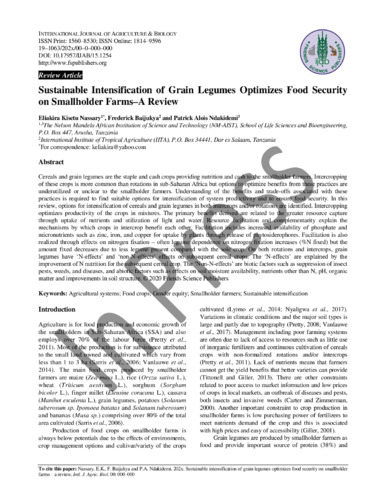Sustainable intensification of grain legumes optimizes food security on smallholder farms: a review
Abstract
Cereals and grain legumes are the staple and cash crops providing nutrition and cash to the smallholder farmers. Intercropping of these crops is more common than rotations in sub-Saharan Africa but options to optimize benefits from these practices are underutilized or unclear to the smallholder farmers. Understanding of the benefits and trade-offs associated with these practices is required to find suitable options for intensification of system productivity and to ensure food security. In this review, options for intensification of cereals and grain legumes in both intercrops and/or rotations are identified. Intercropping optimizes productivity of the crops in mixtures. The primary benefits derived are related to the greater resource capture through uptake of nutrients and utilization of light and water. Resource facilitation and complementarity explain the mechanisms by which crops in intercrop benefit each other. Facilitation includes increased availability of phosphate and micronutrients such as zinc, iron, and copper for uptake by plants through release of phytosiderophores. Facilitation is also realized through effects on nitrogen fixation – often legume dependence on nitrogen fixation increases (%N fixed) but the amount fixed decreases due to less legume present compared with the sole crop. On both rotations and intercrops, grain legumes have ‘N-effects’ and ‘non-N-effects’ effects on subsequent cereal crops. The ‘N-effects’ are explained by the improvement of N nutrition for the subsequent cereal crop. The ‘Non-N-effects’ are biotic factors such as suppression of insect pests, weeds, and diseases, and abiotic factors such as effects on soil moisture availability, nutrients other than N, pH, organic matter and improvements in soil structure.

